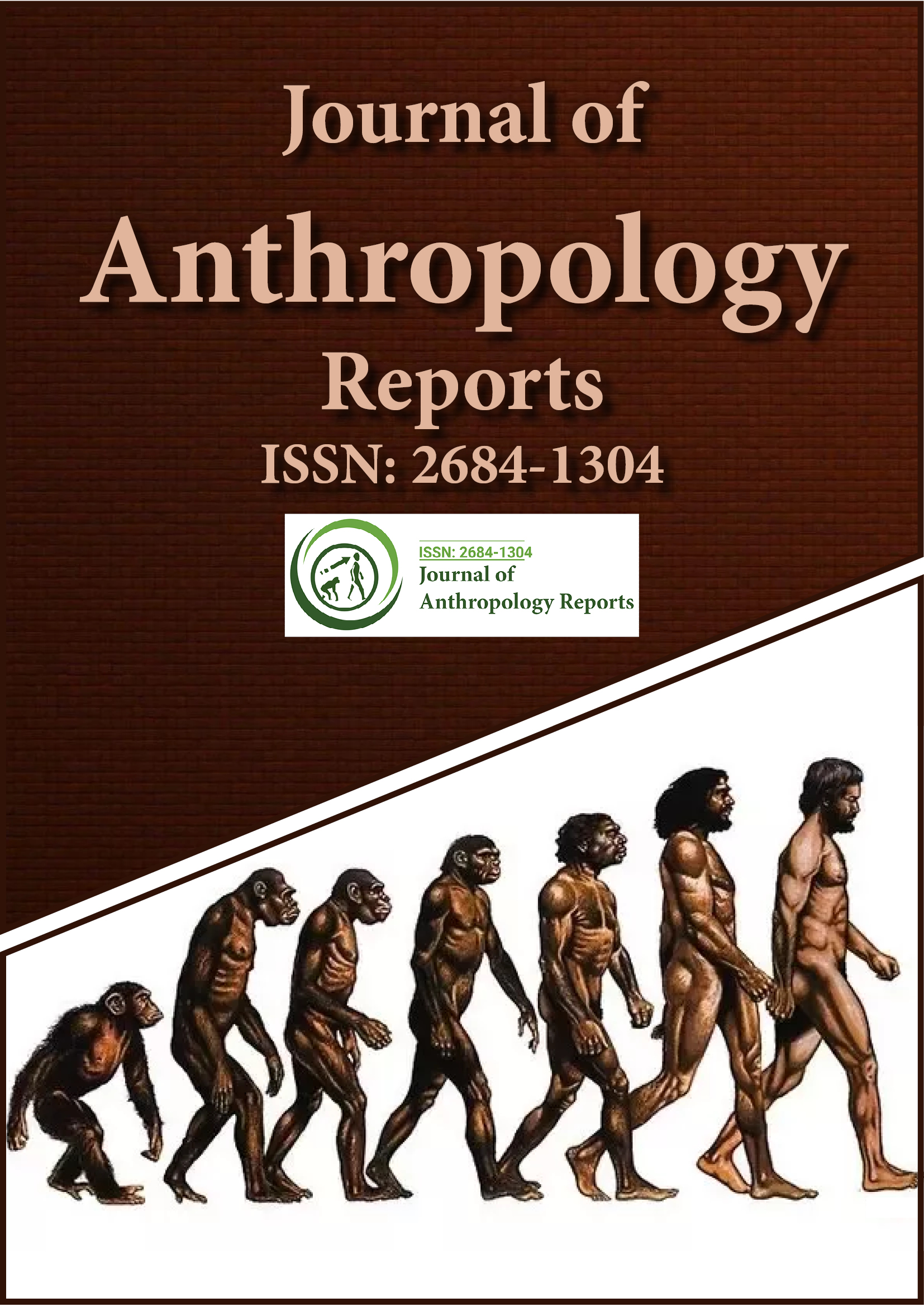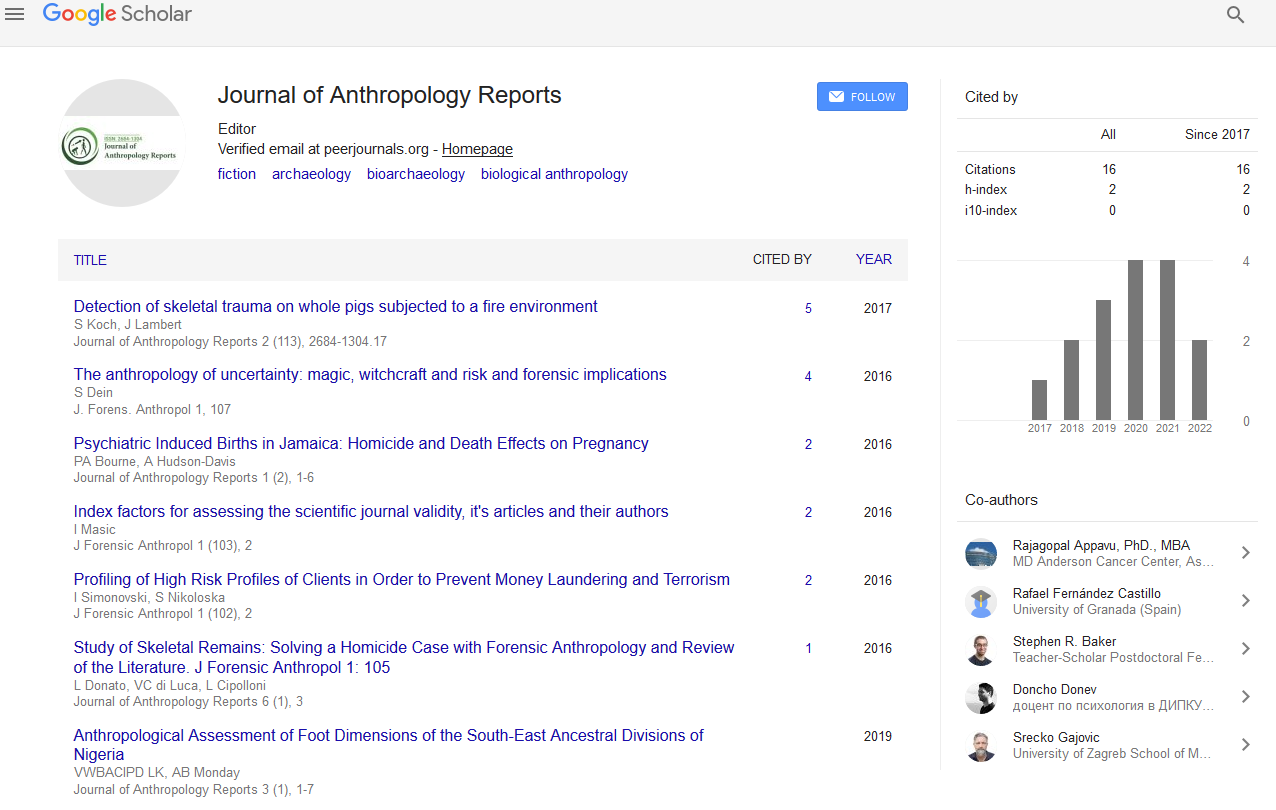Indexed In
- RefSeek
- Hamdard University
- EBSCO A-Z
Useful Links
Share This Page
Journal Flyer

Open Access Journals
- Agri and Aquaculture
- Biochemistry
- Bioinformatics & Systems Biology
- Business & Management
- Chemistry
- Clinical Sciences
- Engineering
- Food & Nutrition
- General Science
- Genetics & Molecular Biology
- Immunology & Microbiology
- Medical Sciences
- Neuroscience & Psychology
- Nursing & Health Care
- Pharmaceutical Sciences
Opinion Article - (2025) Volume 8, Issue 1
Symbolic Meanings of Body Modification in Tribal Communities Worldwide
Oliver Kent*Received: 24-Feb-2025, Manuscript No. JFA-25-29401; Editor assigned: 26-Feb-2025, Pre QC No. JFA-25-29401 (PQ); Reviewed: 12-Mar-2025, QC No. JFA-25-29401; Revised: 19-Mar-2025, Manuscript No. JFA-25-29401 (R); Published: 26-Mar-2025, DOI: 10.35248/2684-1304.25.8.216
Description
In many tribal societies, body modification is more than a personal choice or an aesthetic decision. It is deeply connected to cultural values, spiritual beliefs and social roles. Practices such as tattooing, scarification, piercing and other forms of alteration often carry specific meanings, passed down over generations. These marks can represent beauty, courage, maturity, ancestry, or identity. They are visual statements that communicate a person’s place within their community, their personal history, or their spiritual commitments.
Among various communities in Africa, Asia, the Pacific Islands and the Americas, these practices are closely tied to rituals and stages of life. In some cultures, specific designs or modifications are performed during rites of passage. A boy becoming a man, or a girl reaching adulthood, might undergo a particular form of body alteration to mark this transition. These acts are done in public or communal settings, reinforcing the individual’s role and acceptance into a new stage of life. The process, often painful, may also serve as a test of strength or emotional readiness.
Tattooing, in many societies, holds deep cultural value. Among the Maori of New Zealand, for instance, facial tattoos are unique to each person and carry stories of their ancestry and status. Every line and curve has meaning, telling others who that person is, where they come from and how they are related to others in the tribe. These tattoos are not decorative in a casual sense they are linked to identity and honor.
In some parts of Papua New Guinea, scarification is practiced as a way to show courage and strength. The patterns created on the skin resemble the texture of a crocodile, believed by some groups to be a spiritual ancestor. The marks are applied with great care and the process can last several days or weeks. Those who undergo it are often admired for their ability to endure and for their commitment to cultural traditions.
Lip plates worn by certain groups in Ethiopia, or ear stretching among tribes in Southeast Asia and South America, are other examples where body modification expresses cultural meaning. These modifications often begin at a young age and increase in size over time. In some cases, they represent beauty, in others, social standing or marriage eligibility. The process is gradual and the final result becomes part of the individual’s identity within the group.
These practices are not random or spontaneous. They follow clear patterns and rules set by cultural norms. Only certain people may be allowed to perform them and specific tools or rituals may be used. The techniques are often passed down from elder to younger generations, maintaining knowledge and skill within the community. This transmission of knowledge also connects people across time, linking present-day individuals to their ancestors through shared customs.
In many tribal societies, body modification also reflects belief systems. Marks may protect against evil spirits, show devotion to a deity, or symbolize rebirth and renewal. They are not simply outer signs, but are connected to how people think about life, death and the unseen world. These meanings may not always be spoken aloud but are understood within the group. A mark or symbol on the skin can speak volumes in ways that language cannot.
Conclusion
Respecting these traditions requires understanding their background and purpose. Observing them without judgment or misinterpretation helps preserve the significance they hold. Each scar, tattoo, or alteration is a reflection of choices shaped by culture, environment and history. They are not just patterns on skin they are symbols of belonging, resilience, transformation and memory. As global interest in body modification grows, it is important to recognize the original roots of many such practices.
Citation: Kent O (2025). Symbolic Meanings of Body Modification in Tribal Communities Worldwide. J Anthropology Rep. 8:216
Copyright: © 2025 Kent O. This is an open-access article distributed under the terms of the Creative Commons Attribution License, which permits unrestricted use, distribution and reproduction in any medium, provided the original author and source are credited

